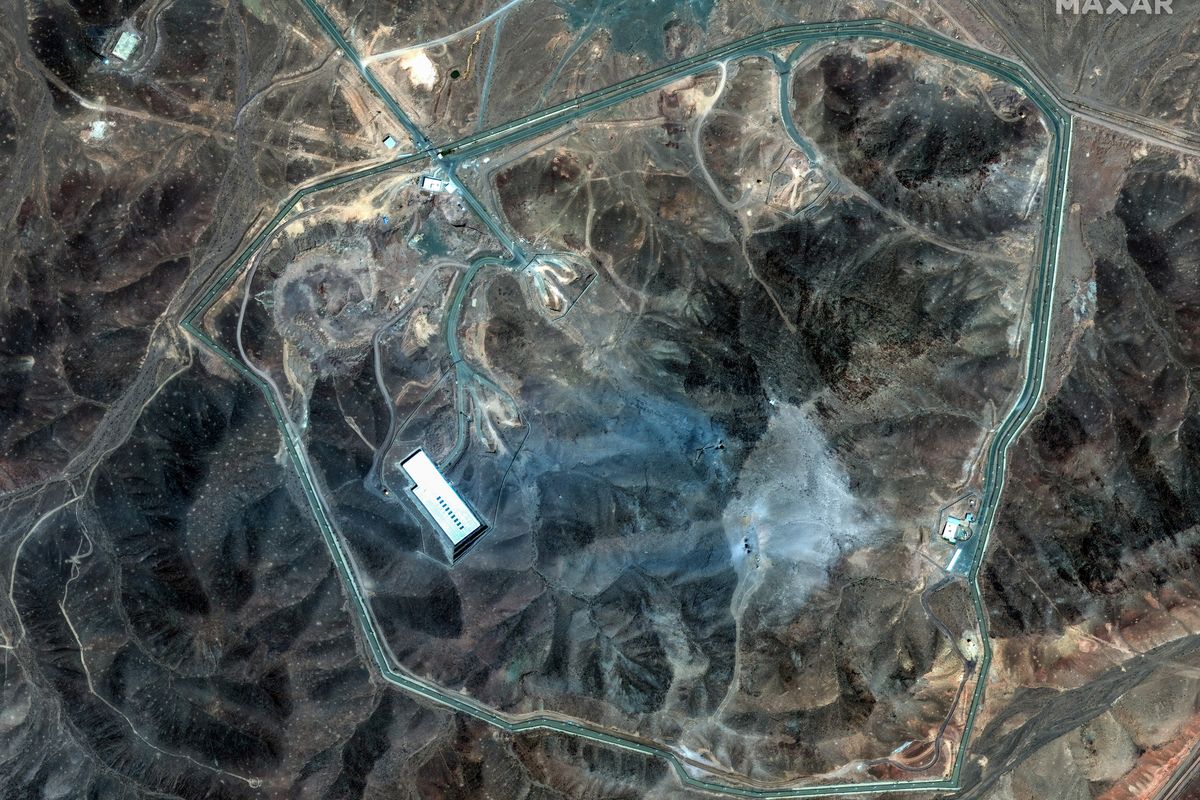EXPERT PERSPECTIVE — Intelligence is for commanders, or at least so I've been told. Regardless of the term you prefer—commander, principal, or policymaker—the idea expressed by the phrase, that intelligence exists to help some "decision-maker" make better decisions, is conventional wisdom in the intelligence community. But it has probably outlived its usefulness.
In an age in which the speed, scale, and scope of overlapping national security issues have eclipsed the ability of any individual leader to keep track of them all, we must think seriously about broadening the intelligence audience. I think that in a period of renewed great power rivalry that takes place under globalized, digital conditions, intelligence must no longer be for commanders—it must be for entire organizations.
The idea that intelligence exists to support executive decision-makers is an old one, passed down through generations of intelligence officers. It originated, whether those passing it realized it or not, with the autocrats who established the first rudimentary spy agencies in the 16th and 17th centuries. Early modern dynasts viewed the gathering of information as their private concern and saw the information that was gathered as their personal property.
The same was true of the military commanders who aimed to further these rulers' interests at war. For one example, consider Napoleon Bonaparte, who was perhaps the ultimate personification of both autocratic ruler and general who was also a voracious personal consumer of the intelligence gathered by his infamous Black Cabinet.
Napoleon's contemporaries did the same. During the Peninsula War of 1807 – 1814, “…all intelligence came to [The Duke of] Wellington and the appraisal of it was his alone…" By the industrial revolution, the notion that intelligence existed to support centralized decision-making had long been established as doctrine. Consider how plainly it was put by George Armand Furse, a Victorian-era British Army colonel who, in his 1895 book Information in War, declared that all intelligence belonged to the commander alone and that “…it is only for him to draw proper conclusions from a thorough consideration of the total information gathered from every possible source.” This doctrine influenced the formation of early private sector enterprises in the nineteenth century, which then themselves went on to influence the establishment of modern government bureaucracies—such as the first real intelligence services—in the early twentieth.
Today, this inheritance still weighs heavily on the intelligence community. It influences both broad organizational values and the daily actions of individual collectors, analysts, and managers. From determining who gets access to the sensitive fruits of the community's secretive labor to framing how the intelligence agencies themselves are structured, staffed, and funded, the mantra that intelligence is for a select audience of deputies, principals, and other senior executives is so deeply ingrained that it would be difficult to root out.
Cipher Brief Subscriber+ Members receive exclusive expert briefings from members of our expert network. Upgrade to Subscriber+ today.
That's unfortunate because today the emphasis on providing intelligence to senior leaders—which too often comes at the expense of the broader national security enterprise—leaves America insufficiently equipped for an era of strategic competition. With few exceptions, and despite a real push to provide greater intelligence support to lower-level commands during the wars in Iraq and Afghanistan, the community still expends the vast majority of its time and resources to produce high-level intelligence products intended to only ever be seen by the smallest number of people at or near the top of large bureaucratic pyramids.
Admittedly, it does an excellent job at this. Every day, talented and dedicated intelligence officers cater to the individual schedules and preferences of officials across the Executive Branch, providing them with on-demand, world-class intelligence support wherever they might be. Entire teams of analysts on both the front and back ends are dedicated to providing these decision-makers with customized briefing books and curated deskside presentations modeled after the President's Daily Brief itself. These executives' questions are answered, usually on the spot—and if that isn't possible, analytic teams supporting them will find someone who can answer them as quickly as possible.
Meanwhile, the vast majority of national security employees—which includes more junior military and foreign service officers, various homeland security and law enforcement officials, sundry action, program, and acquisition officers, and others—have little time or incentive to seek out even the limited intelligence support they have access to—which too often isn't much. All of these staffers frame discussions, coordinate between agencies, generate policy options for seniors, and otherwise make important decisions themselves every day, but many amazingly lack access to the computer networks on which the best on-the-shelf intelligence products reside, and even if they did have it most of them wouldn't know where or how to retrieve the products that already exist anyway because they're not easy to find.
In simpler times, when useful information was scarcer, when the relative influence and the span of control of individual leaders was greater, and when the rate of change was slower, this way of doing things made a whole lot of sense. Hierarchies are very effective at coordinating large systems when the rate of change is slower, and centralized decision-making works quite well when decisions need to be made less frequently. In the past, these sorts of systems were pretty good at resolving internal conflicts quickly and enforcing compliance across the organization.
We no longer live in simpler times.
Today, in contrast to the past, we are inundated with useful information. Today, in contrast to the past, the influence of empowered collectives matters just as much, if not more, than the influence of any individual leader.
Today, in contrast to the past, the rate of change is rapid, and it shows no signs of slowing down any time soon. Our era is characterized by information overload, persistent uncertainty, and relentless technological progress—it is one in which the scope, scale, speed, and interconnectedness of strategic issues regularly exceed the decision-making prowess of anyone, no matter how brilliant they might be.
Ours is also an era of strategic competition with rival great powers, a competition that is more about organizational acumen and administrative capacity than it is the decision-making prowess of any single leader. In contrast to the past, the competition today is not limited to staterooms and military command centers. Indeed, it is distributed globally, across time and space, at multiple levels of organization, and every dimension of national power. It encompasses the whole of society through overlapping webs of influence that run over, under, and through international institutions, governments, political parties, and individuals. The units of maneuver in this competition are no longer just naval squadrons and army divisions, but entire offices, agencies, and departments. To win, we will need organizations that are both internally coherent and externally aligned with a vision established by national leaders. We will need organizations with honed senses that are more responsive to changes in the competitive space, both at home and abroad. We will need organizations better able to act swiftly to mitigate threats or seize opportunities.
These things can't be commanded from the top down. They can only be facilitated from the bottom up. Since each person in a traditional hierarchy only works on the tasks they are assigned, those near the top are the only ones who can see the proverbial 'big picture.' When these individual leaders—brilliant or not—become overloaded with work or suffer from decision fatigue, the entire system slows down.
By that point, what decisions do get made typically only serve to reinforce the status quo when they should instead be responsive to change. Famed political scientist James March describes this in his book, A Primer on Decision Making. When only the senior-most people in an organization are empowered to decide, you get what he calls “garbage can decisionmaking" —exactly the sort we can no longer afford.
Recognizing this, successful enterprises in the private sector increasingly no longer operate this way. They’ve learned that the pace of change in the digital age has eclipsed the ability of both individual leaders to keep up and of centralized decision-making processes to keep pace. They're no longer using disparate organizational functions merely as channels through which information is sifted and refined as it gets passed up the chain, and they’re no longer waiting for that information to eventually reach an executive with enough authority to make a decision before then having to pass it all the way back down that chain before to be implemented.
Instead, they've adapted to the speed, complexity, and uncertainty of the 21st-century by reorganizing to solve problems when and where they arise. They've torn down the walls between silos to facilitate the freer exchange of information for broader organizational awareness, and they've flattened arbitrary administrative hurdles to empower those closest to the source of an issue with both the access and the authority needed to make and execute decisions on their own. They've encouraged their employees to take responsibility for decisions within the scope of their work by devolving authority and removing layers of mid-century managerial style. These steps alone go far toward letting individuals see the connection between their contribution to a project and its outcome, giving them a greater sense of agency and more ownership over results that hierarchical organizations just can’t easily replicate.
Google, for just one example, is a famously ‘bottom-up’ style of company, where even very junior employees have a significant role in decision-making within their scope of work. Even in the military, where you might expect the mantra of commander exclusivity to be intractably retrenched, forward-thinking leaders are coming around to the idea that today unity of effort might trump unity of command. The U.S. Army, for instance, is promoting a concept called 'mission command' that anticipates the speed and uncertainty of contemporary warfare by empowering decentralized, local decision-making at the tactical edge.
While it's unlikely that the national security enterprise will ever become as agile as private sector firms like Google (or even the U.S. Army), I nonetheless believe there is much to be learned from this nimbler, more collaborative way of doing things. For the intelligence community in particular, the lessons are clear.
Read The Corporate Intelligence Playbook by Cipher Brief Expert and VP of Intelligence & International Advisory at bp, Bradley Fernandez in The Cipher Brief
In an article last year for Foreign Affairs, Carmen Medina and I called for the intelligence community to embrace not just open sources, but the concept of openness itself. What does that mean? For the immediate future, it would mean more production based on publicly-available information and significant investments in building convenient, user-focused applications to deliver these products frictionlessly. Eventually, it would mean the overhaul of a legacy security architecture that governs the classification of sensitive sources and methods—a long-overdue updating of these guidelines to make them better suited to the digital era, enabling the community to give access to many more people across the national security enterprise and to critical partners in the private sector and academia, as well.
More recently, Kathleen McInnis and I argued in Foreign Policy that in addition to its information technology, the national security enterprise needs to overhaul its work processes, as well. The defense and intelligence sectors are spending a lot of money building hybrid cloud systems to enable greater information-sharing, but if it doesn't update its workflows and decision-making processes at the same time, these will be of limited utility. Because organizations are composed of individuals, national security professionals across the government should be able to access all-source intelligence swiftly, easily, and in a manner that suits their personal preferences. This would facilitate both their routine work and the crucial decisions they make daily.
Of course, executive leadership still matters. Few doubt that some decisions should only be made at the highest levels of an organization. But in our fast-paced, complex world, a senior leader's role is less about making day-to-day decisions and more about setting the conditions for others to make decisions on their behalf. Their role is more about being able to effectively articulate a common vision for their organizations to target, and then to equip their followers with the resources and leeway that allows them to take aim.
Today, rapid, organization-wide communication is more important than stratified reviews that delay the delivery of practical insight to users. Intelligence should no longer focus on gathering information and funneling it to the top; instead, it should make organizational sensemaking its purpose. It should facilitate the frictionless flow of useful information—which is to say, intelligence—to every node within the trusted workforce.
In conclusion, all of this will require a reframing of what we think intelligence is and just who we think it is for. Instead of seeing intelligence as an exclusive product delivered to senior leaders—the standing-room-only briefing, the restricted-access white paper—we should start thinking of intelligence as an intangible, continuous, and much more broadly accessible, human-focused service that expands a given user's mental map of the world and helps them to navigate that world more easily, in collaboration with their colleagues.
Intelligence is instrumental. It has no autarkic purpose of its own at all. It does not, as Sherman Kent himself wrote, “pursue knowledge for its own sake.” Intelligence is simply the act of helping someone who can affect a given situation understand that situation better than they did before. Intelligence is also an enterprise—that is, it is a team sport. But the game this team is playing is not a finite one with clearly-defined rules and an established roster of player positions; it is instead an infinite game in which the rules can change during the course of play, bounded only by a colleague's—or an opponent’s—creativity. In other words, the needs of the team are apt to change just as the external world is, itself, always changing.
Intelligence is still for commanders, but today, it’s also for entire organizations.
The views expressed are those of the author and do not reflect the official policy or position of the Department of Defense or the U.S. Government.
The Cipher Brief may earn a small commission on products purchased via links.
The Cyber Initiatives Group’s next Public-Private Summit co-hosted by Cipher Brief CEO & Publisher Suzanne Kelly and former NSA Deputy Director Rick Ledgett, is on Wednesday, May 25. Reserve your seat today.
Read more expert-driven national security insight, perspective and analysis in The Cipher Brief












